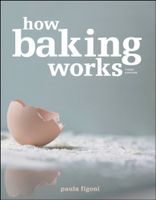Label
All
0
Clear all filters
🔥 Try our grilling cookbooks and save 25% on ckbk membership with code BBQ25 🔥
Shortenings
Appears in
By Paula Figoni
Published 2003
The main difference between shortening and margarine is that shortening is 100 percent fat and contains no water. Most shortenings are also white and bland tasting, but some are butter flavored and colored with beta-carotene or another yellow color. Shortenings range in consistency from creamy liquid to solid flakes.
Shortening was originally developed as a replacement for lard. Like margarine, shortenings are designer fats, so many types are available to the baker and pastry chef. The three main types of shortenings used in the bakeshop are all-purpose shortening, high-ratio plastic shortening, and high-ratio liquid shortening. Other shortenings are available, too, including ones designed specifically for frying; for the softest, lightest icings; for the flakiest pastries; or for breads with a soft crumb and long shelf life (delayed staling).
Become a Premium Member to access this page
Unlimited, ad-free access to hundreds of the world’s best cookbooks
Over 160,000 recipes with thousands more added every month
Recommended by leading chefs and food writers
Powerful search filters to match your tastes
Create collections and add reviews or private notes to any recipe
Swipe to browse each cookbook from cover-to-cover
Manage your subscription via the My Membership page
Monthly plan
Annual plan
In this section
Part of
Advertisement
Advertisement
The licensor does not allow printing of this title


